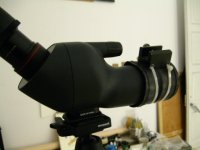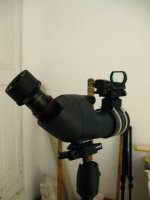RJM
Don't Worry, Be Happy!
Steve, a diffraction limited 50mm optic can resolve details as small as the Rayleigh limit subject to the atmospheric conditions, details far smaller than can be seen with the naked eye. The mag limits represent the powers needed to make those fine details visible to us weak-eyed humans.
In practical terms, the math says detail as small as ~0.5mm in size should be "seen" at 20x in the ED50 at a distance 40m. Think bird feather details. But the microscopic dust mites living on those feathers might always be "invisible" no matter how much mag you apply since they are smaller in angular size at 40m distance than the Rayleigh limit of the 50mm objective.
I think 80x would be way too high given that the scope would be considered diffraction limited at just ~50x. Making a capable SP erecting prism is the main hurdle to a better than diffraction limited spotter. More than 50x magnification could be useful for splitting double stars but I suspect the airy disk of any point source would be a blurry blob way before 80x in the ED50.
Most of the things we look at during the day could be considered extended objects anyway where contrast (AND brightness) is key to resolving detail. Adding a small lens hood to the front of the ED50 can improve that performance aspect.
In practical terms, the math says detail as small as ~0.5mm in size should be "seen" at 20x in the ED50 at a distance 40m. Think bird feather details. But the microscopic dust mites living on those feathers might always be "invisible" no matter how much mag you apply since they are smaller in angular size at 40m distance than the Rayleigh limit of the 50mm objective.
I think 80x would be way too high given that the scope would be considered diffraction limited at just ~50x. Making a capable SP erecting prism is the main hurdle to a better than diffraction limited spotter. More than 50x magnification could be useful for splitting double stars but I suspect the airy disk of any point source would be a blurry blob way before 80x in the ED50.
Most of the things we look at during the day could be considered extended objects anyway where contrast (AND brightness) is key to resolving detail. Adding a small lens hood to the front of the ED50 can improve that performance aspect.
Last edited:







